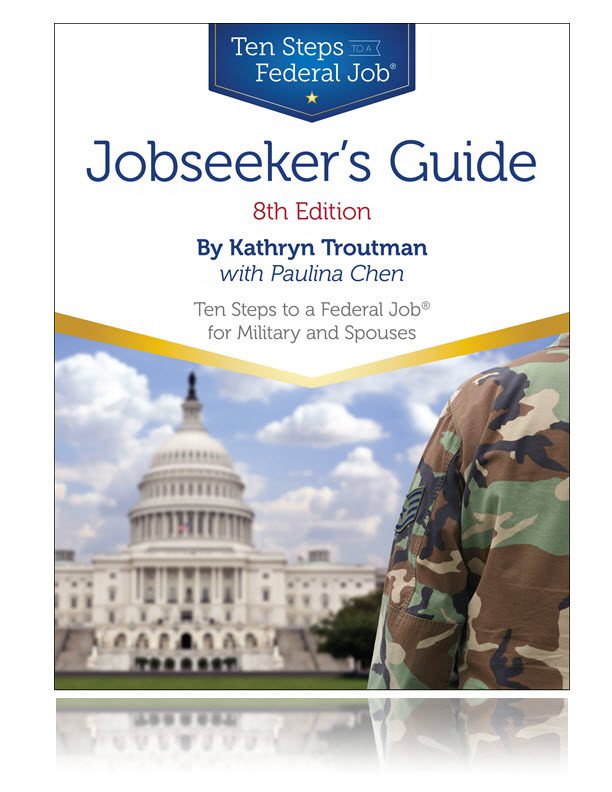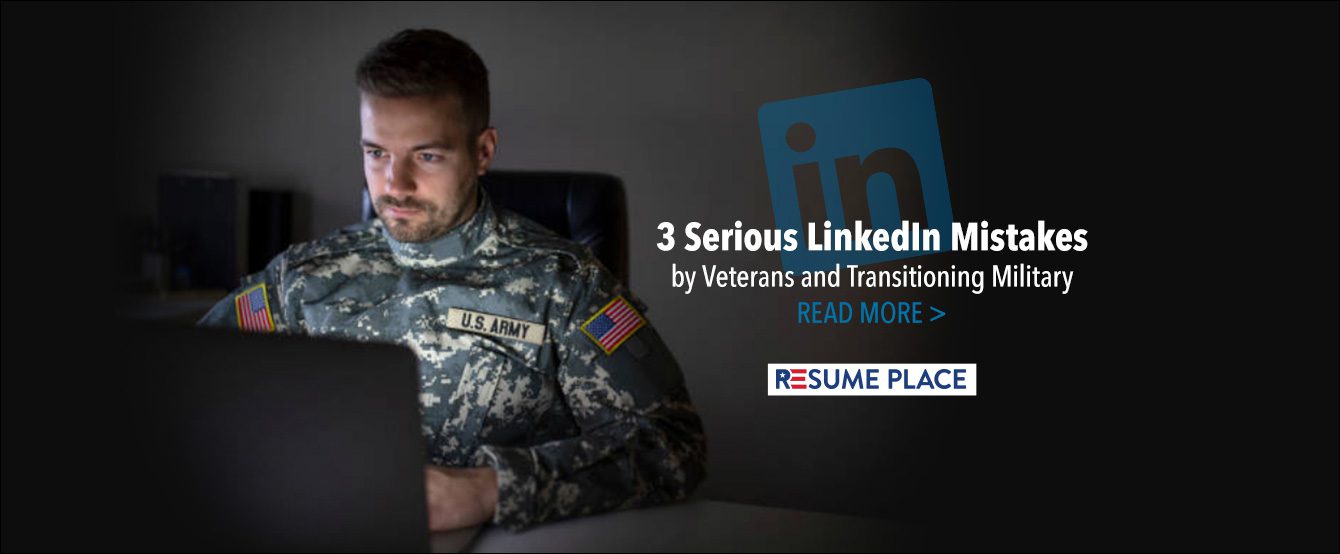3 Serious LinkedIn Mistakes
frequently made by Veterans and Transitioning Military
by Susan P. Joyce
January 22, 2019
Through my years of teaching my LinkedIn workshop to the transition classes at Hanscom AFB, I have learned 3 major mistakes that transitioning military and veterans often make with LinkedIn.
LinkedIn is an important job search and networking tool, and you MUST pay attention and work on your Profile and visibility – – in order to find employment in the civilian job market!
When filling a job, recruiters typically first search in LinkedIn looking for local people who are qualified for a job. So, LinkedIn membership is a necessity today for most professionals, a basic requirement for career and job search.
In addition, recruiters also search LinkedIn to learn more about job applicants and job candidates, making LinkedIn an essential part of our personal online reputation management. When a recruiter does a Google search on your name, LinkedIn results are usually near the top of the first page (few people look past the first page).
Consequently, LinkedIn is nearly unavoidable for most working people today.
1. Not joining LinkedIn BEFORE your transition.
When is the best time to deploy the life boats — after the ship has sunk or before it sinks? Before, of course! Same with joining LinkedIn! Build your LinkedIn career lifeboat before you need it for your civilian job search.
Unless you are hired by a personal friend without a formal hiring process, most employers will want to compare your resume or application with your LinkedIn Profile. They assume, based on painful experience, that LinkedIn Profiles (viewable by colleagues, friends, and family) are apt to be more accurate than resumes/applications submitted privately which may contain a few “exaggerations.”
Since you usually know your transition date well in advance, don’t wait until the last few days or weeks to work on your LinkedIn Profile. Start building it and expanding your LinkedIn network (a.k.a. “connections”) while you are still on active duty.
2. Not translating military jargon into civilian-speak
and not quantifying your accomplishments in LinkedIn.
Yes, everyone in the military knows what an OIC and an NCOIC are, but the civilian world has no idea. Explain in terms that civilians understand: number of people led, logistics required, accomplishments achieved, and leadership demonstrated.
In your military duties, you gained amazing experiences that most civilians your age have not come close to reaching, even if you are in your 40’s or later. You managed impressive quantities of people and material. Explain that to civilians who have no clue.
Assume you led a platoon of Marines. The civilian world has no idea what a platoon is or how many Marines are in a platoon, so simply stating that fact in your LinkedIn Profile is not useful.
Better: explain that to them in terms civilians can understand – “Led 44 Marines for 12 months in combat action to meet tactical and strategic requirements. Managed team readiness, responses, and tactical assignments in very high stress situations. Accountable for $1,500,000 of material, organizing and coordinating cross-functional activities to acquire and maintain the appropriate level of supply as well as the movement of material as necessary, with no losses or discrepancies. Facilitated 10 technical skills certifications and 12 promotions for team members.”
3. Wasting the LinkedIn Premium Careers Membership
by Using it Too Soon
+++Don’t sign up for this one-time benefit until your Profile is complete and you have at least 300 connections!+++
Wait until you are 3 months or less from separation. Implemented too far in advance or without a solid profile, you will be wasting a benefit that costs civilians $360, and you will look “green” to recruiters.
LinkedIn offers a one-time free annual Careers membership. (Click here.)
Benefits of the Premium Careers membership include:
- Be a “Featured Applicant”
When you choose this option and meet a recruiter’s search criteria, your Profile receives greater visibility in the recruiter’s search results. (This will not make up for having a skimpy Profile! In fact, a member with a skimpy Profile looks very clueless and/or lazy if they implement Featured Applicant.) - See “Profile Views”
See who has viewed your Profile in the last 24 hours and in the last 90 days. These views hopefully include recruiters, employees of other organizations, and other LinkedIn members who haven’t set their accounts to be anonymous. LinkedIn will show you the trends in views of your Profile. So, if you publish an article or make a comment, you will (hopefully) see the reactions in the trendline. - Take LinkedIn Learning classes for free
For you, the Premium Careers membership includes 12 months of free access to all of the online courses available in this site, formerly known as Lynda.com, offering over 10,000 courses in business, technology, and creative skills.
This is available for veterans and members of the US Department of Defense, any time. It is also available to the spouses of military members who have transitioned, retired, or done a permanent change of station in the last six months, and includes 12 months of LinkedIn Learning (thousands of online courses you can take).
If you aren’t sure you want to use your 12 months now, accept LinkedIn’s standard offer to “try” Premium for 30 days. At the end of the 30 days, you can activate your free 12 months – or not. Best to save this option until you can gain the most benefit from it.
For more details about the program and the application process, veterans and active duty military can learn more about this program at LinkedIn Veterans Programs, and spouses can find more information at LinkedIn Supporting Spouses.
The Bottom Line
LinkedIn is unavoidable these days for most of us. Veterans, active duty military, and the spouses of active duty military have a great opportunity provided for free by LinkedIn. Gain the greatest benefit you can from that membership by avoiding the 3 major mistakes above.
About this author … Susan P. Joyce is a veteran of the United States Marine Corps and a recent Visiting Scholar at the MIT Sloan School of Management. Susan is a two-time layoff “graduate” who has worked in human resources at Harvard University and in a compensation consulting firm. Since 1998, Susan has been editor and publisher of Job-Hunt.org, a Forbes Top 100 Website for Your Career. Follow Susan on Twitter @jobhuntorg, LinkedIn, and Facebook.

BEST BOOK FOR TRANSITIONING MILITARY, SPOUSES AND VETERANS!
JOBSEEKER’S GUIDE, 8th Edition
Ask for professional writing help for your federal resume, if you want your announcements to really count. We can match the resume to the announcement! Our quotes are FREE.







